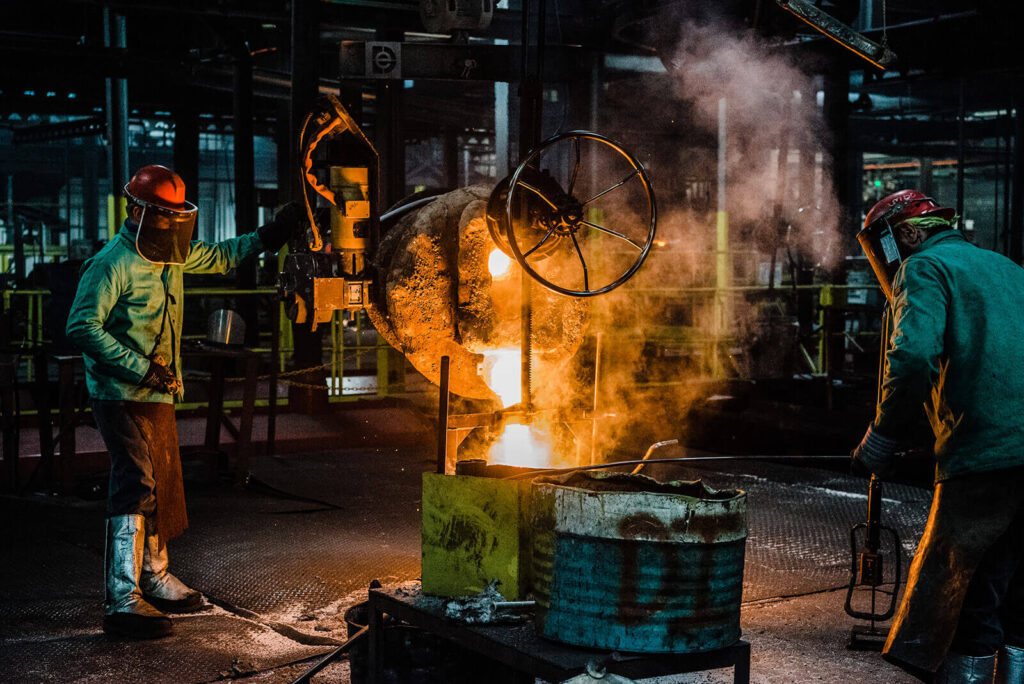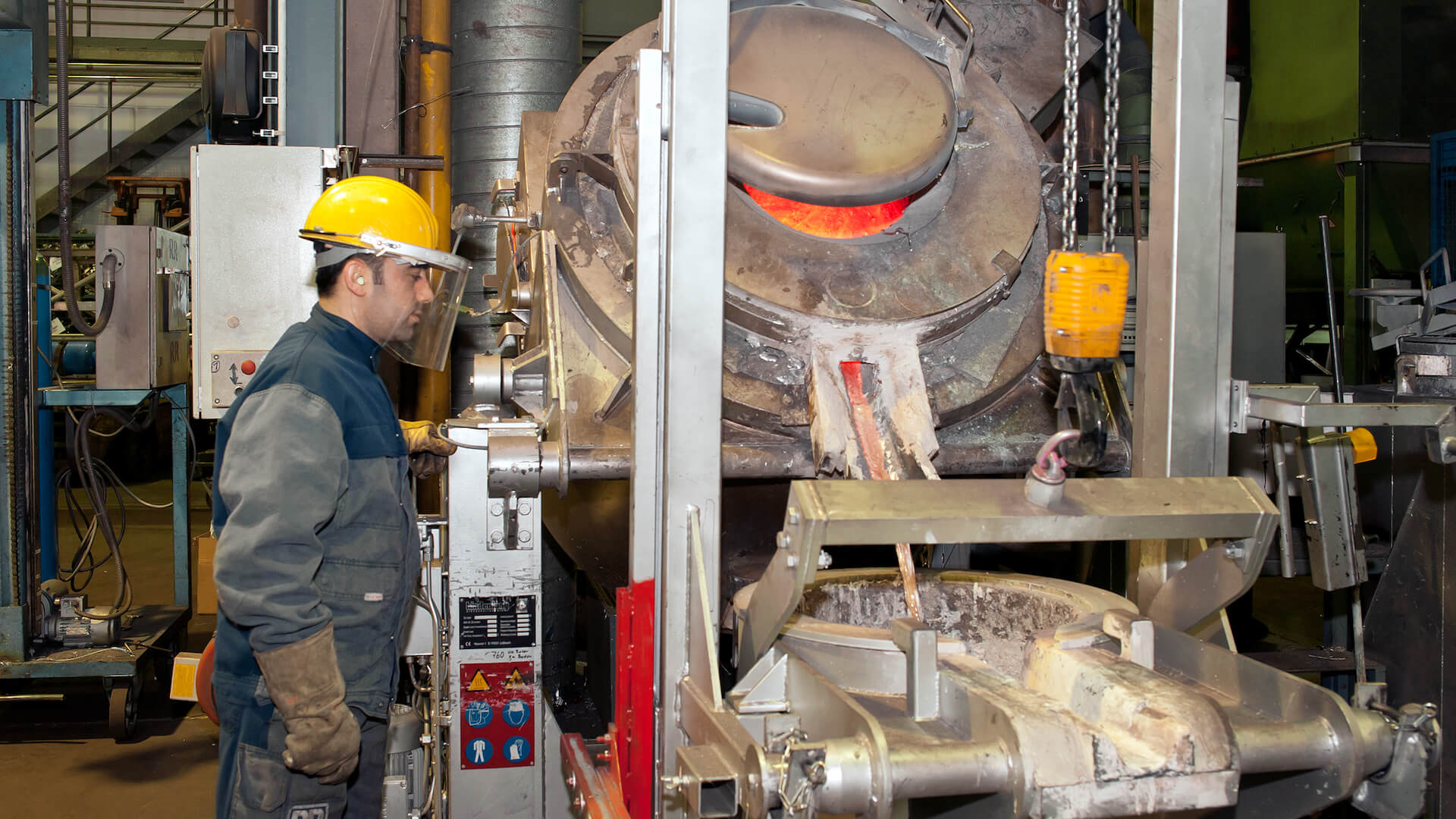The role of Aluminum Foundry in construction industries
Everything About Aluminum Foundry: Trick Utilizes and Its Influence on Item Advancement
Aluminum foundries are crucial in contemporary production, especially in sectors like automotive and aerospace. They use advanced methods to develop light-weight, sturdy parts that enhance performance. The flexibility of aluminum likewise lines up with sustainability initiatives, making it a favored material. The ongoing advancements in casting approaches and their implications for product development raise important questions. What future developments might reshape the landscape of aluminum foundries and their applications?
Introduction of Aluminum Foundries
Aluminum foundries offer as important centers in the metalworking industry, concentrating on the casting of aluminum and its alloys. These facilities use different methods, including sand casting, pass away casting, and financial investment casting, to change raw aluminum right into functional kinds. Each casting technique supplies special advantages, dealing with different project demands varying from little components to large architectural aspects.
The foundries run via a thorough process that begins with melting aluminum, complied with by pouring the liquified steel right into molds. After cooling down, the castings go through ending up processes, which may entail machining and surface area therapy to meet precise specifications.
Quality assurance is extremely important, making sure that the end products meet industry criteria and consumer assumptions. On top of that, aluminum foundries often emphasize sustainability by reusing scrap aluminum, thereby reducing waste and conserving resources. This dedication to reliable production and ecological responsibility placements aluminum foundries as vital factors to the production landscape.

Trick Applications of Aluminum Castings
Aluminum castings serve important functions in numerous sectors, particularly in auto and aerospace fields. In the auto market, they contribute to light-weight frameworks and reliable efficiency. Aerospace component manufacturing relies on aluminum castings for their toughness and deterioration resistance, necessary for high-performance applications.
Automotive Industry Applications
In the vehicle market, aluminum castings play a vital duty in boosting car performance and efficiency. These castings are extensively used for elements such as engine blocks, transmission housings, and suspension parts. Their light-weight nature adds to minimized car weight, which subsequently enhances gas economy and handling. Additionally, aluminum's exceptional thermal conductivity allows for reliable heat dissipation, vital for high-performance engines. The deterioration resistance of aluminum also extends the life-span of vehicle components, decreasing upkeep costs. Advancements in casting technologies enable the manufacturing of complicated forms, maximizing the design and capability of components. On the whole, aluminum castings are important to modern automotive design, sustaining advancement and sustainability in car layout.
Aerospace Element Manufacturing
The aerospace market significantly counts on aluminum castings for a series of critical elements due to their useful residential properties. Light-weight yet strong, aluminum castings boost gas efficiency and general performance in airplane design. Components such as engine places, architectural frames, and touchdown gear are often generated utilizing aluminum casting techniques, allowing makers to accomplish intricate geometries while keeping architectural stability. The high resistance to deterioration and thermal buildings of aluminum also add to the longevity and reliability of aerospace components. Additionally, innovations in casting modern technologies, such as accuracy casting and 3D printing, have increased the abilities of aluminum in this field. Inevitably, aluminum castings play an important duty in meeting strict security requirements and efficiency requirements in contemporary aerospace applications.
Benefits of Utilizing Aluminum in Manufacturing
While numerous products are offered for manufacturing, aluminum stands out due to its one-of-a-kind mix of buildings that boost efficiency and efficiency. One considerable benefit of aluminum is its lightweight nature, which adds to minimized power usage and enhanced fuel efficiency in numerous applications. In addition, aluminum shows exceptional rust resistance, extending the lifespan of products and decreasing upkeep costs. Its high thermal and electrical conductivity makes it suitable for warm exchangers and electrical elements, while its pliability enables versatile layouts and complex shapes.
Aluminum is recyclable, advertising sustainability in manufacturing procedures. This reusability not only conserves resources however likewise reduces the carbon footprint connected with production. The versatility of aluminum to various alloys further boosts its energy in varied sectors, from automobile to customer electronics. Collectively, these features make aluminum an ideal choice for producers looking for to balance performance, cost-effectiveness, and ecological responsibility.
Innovations in Casting Techniques
Current developments in casting techniques have actually substantially transformed the aluminum factory industry. The assimilation of 3D printing innovation has made it possible for much more intricate layouts, while boosted alloy formulas improve efficiency and sturdiness. These technologies are driving efficiency and increasing the applications of aluminum in different sectors.
3D Printing Assimilation

Improved Alloy Formulas
Improvements in aluminum shop modern technology have led to the advancement of improved alloy formulations click resources that enhance casting efficiency and product residential properties. These cutting-edge formulas commonly integrate aspects such as silicon, magnesium, and copper, which enhance stamina, ductility, and rust resistance. By fine-tuning the structures, producers can achieve particular characteristics tailored to diverse applications, from auto to aerospace markets. In addition, these boosted alloys help with far better fluidness throughout the casting procedure, decreasing flaws and improving surface finish. Consequently, the efficiency of production is significantly enhanced while preserving rigorous top quality standards. This advancement in alloy growth not only enhances production yet likewise supports the production discover this of lighter, more powerful components, ultimately progressing item advancement and performance.
Influence on Aerospace and Automotive Industries
The notable influence of aluminum foundries on the aerospace and auto markets can not be overemphasized. Aluminum alloys, recognized for their light-weight and high toughness, have reinvented the design and manufacturing processes in both sectors. In aerospace, the reduction in weight directly correlates to fuel efficiency, permitting longer trips and lower exhausts. Elements such as aircraft frames, wings, and engine components benefit from aluminum's excellent exhaustion resistance and deterioration resistance.
In the vehicle market, aluminum foundries add to the manufacturing of lighter lorries, enhancing efficiency and fuel economic situation while fulfilling strict ecological laws. The use of aluminum in engine blocks, body panels, and wheels has raised significantly, driven by consumer need for a lot more effective vehicles. In addition, innovations in casting strategies have improved the accuracy and capability of components, making it possible for makers to establish more integrated and complex designs, therefore promoting improvements in both industries.
Sustainability Practices in Aluminum Foundries
Aluminum foundries are increasingly accepting sustainability practices to lower their environmental impact while satisfying the expanding demands of the aerospace and automobile sectors. These methods include the execution of energy-efficient technologies, such as electrical melting heaters and advanced heat recuperation systems, which greatly lower energy intake (Aluminum Foundry). On top of that, several foundries are prioritizing the use of recycled aluminum, which requires less power and leads to lowered greenhouse gas discharges contrasted to key aluminum production
Water preservation efforts are also acquiring grip, with foundries using closed-loop systems to lessen water use and prevent contamination. Additionally, waste management strategies, including recycling scrap and minimizing contaminated materials, add to a more lasting operation. By adopting these methods, aluminum foundries not just boost their competitiveness yet additionally align with international sustainability goals, eventually sustaining a round economic situation and cultivating innovation in eco pleasant manufacturing procedures.
Future Patterns in Aluminum Spreading Innovation
As the need for lightweight and long lasting about his products remains to climb, developments in casting innovation are poised to improve the aluminum industry. Advanced techniques such as 3D printing and automated casting procedures are gaining traction, permitting for more intricate geometries and minimized product waste. The combination of fabricated knowledge and artificial intelligence is likewise enhancing quality assurance and process optimization, lessening defects and improving effectiveness.
The advancement of new aluminum alloys is expanding the application array of cast items, making them ideal for industries from automobile to aerospace. Boosted reusing techniques are expected to even more decrease environmental influences, lining up with international sustainability objectives.
In addition, the use of smart sensors in casting processes is anticipated to make it possible for real-time tracking, guaranteeing greater precision and consistency. These fads symbolize a transformative age in aluminum casting modern technology, allowing makers to satisfy advancing market demands while prioritizing sustainability and technology.
Often Asked Concerns
Just How Is Aluminum Recycled After Use in Products?
Aluminum recycling entails collecting, sorting, and melting utilized aluminum products (Aluminum Foundry). The liquified steel is then cast into brand-new forms, decreasing energy usage and protecting natural deposits, making it an effective and lasting process for aluminum recovery
What Precaution Are Implemented in Aluminum Foundries?
Safety procedures in aluminum foundries include appropriate ventilation systems, individual safety equipment, normal security training, tools maintenance methods, and emergency situation feedback plans, all targeted at reducing dangers connected with heats and dangerous materials during manufacturing.
Exactly How Do Aluminum Foundries Make Sure Quality Assurance?
Aluminum foundries carry out rigorous quality assurance procedures, consisting of material examinations, temperature monitoring, and dimensional checks. These actions guarantee item uniformity, minimize defects, and follow sector criteria, eventually boosting consumer complete satisfaction and operational efficiency.
What Are Common Challenges Encountered by Aluminum Foundries?
Aluminum foundries frequently encounter challenges such as preserving regular high quality, taking care of manufacturing prices, ensuring prompt distribution, addressing equipment upkeep, and adjusting to developing sector guidelines. These factors can considerably impact general functional performance and earnings.
Exactly How Does Aluminum Spreading Affect Product Weight?
Aluminum casting substantially lowers product weight because of aluminum's low thickness contrasted to various other metals - Aluminum Foundry. This lightweight particular boosts style versatility, improves gas performance in transport applications, and uses advantages in numerous markets calling for weight-sensitive components